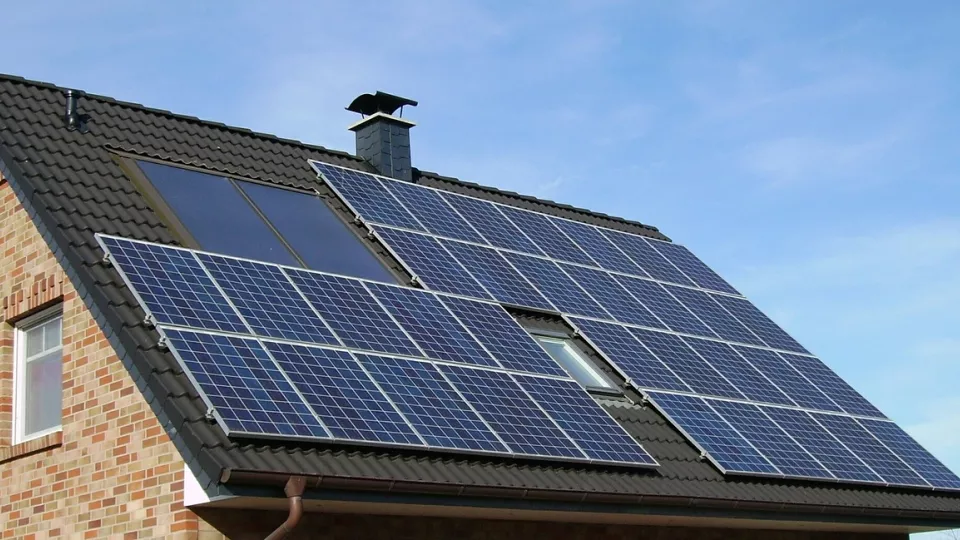Prof. Jenny Palm at the IIIEE has reported the results from the project “Small-scale solar electricity in buildings – power for change in energy systems and everyday life”
The research was done in collaboration with Uppsala University and Linköping University and it was funded by the Swedish Energy Agency.
The aim with the project was to examine the extent to which households develop strategies to increase the use of their own produced electricity and how electricity use patterns changed after the installation of a photovoltaic system. The project quantified both actual and potential changes through measurements and simulations, and analyzed households’ understanding and approach to solar technology before and after installation, and perceived incentives and barriers. We also analyzed the degree of use of the own produced electricity and consumption flexibility.
The results from the IIIEE research are presented in three articles:
Palm, J (2018), Household installation of solar panels - motives and barriers in a 10-year perspective, Energy Policy, vol 113, pp 1-8
This paper presents the reasons households have identified for installing or not installing photovoltaic panels (PVs) in Sweden. It compares the results from interviews done in 2008–2009 and in 2014–2016 with homeowners in Sweden that had installed or were considering installing photovoltaic (PV) panels. The comparison focuses on the market and on what homeowners identified as motives and barriers for investing in PVs. The paper also discusses how the market for PV panels has changed over these years.
Between 2008 and 2014, the PV market has changed profoundly, with an increase in the numbers of PV companies targeting households, the introduction of subsidies for households for installing PVs, and changes in rules, which have made it easier for households to sell electricity they produce back to the grid. At the same time, the regulations have increased for the households. The reasons for homeowners installing PV vary. Environmental motives have been consistent over the years. Some reasons have changed over the time; financial incentives had become an important motive by 2014–2016. The investment costs have remained a barrier, even though they have been reduced. New barriers in recent years are, for example, problems relating to finding information about which companies exist and how much a household will receive when selling the electricity to the grid. Installation was no longer a barrier by 2014. In 2008–2009, households installed the PV panels on their own and installation was a major barrier. This had changed radically by 2014–2016, when most of the households studied had bought turn-key systems with installation included.
Palm, J, Eidenskog, M & Luthander, R (2018), Sufficiency, change, and flexibility: Critically examining the energy consumption profiles of solar PV prosumers in Sweden, Energy Research & Social Science, 39, pp 12-18
The number of consumers producing electricity at home, i.e., “prosumers”, is rapidly increasing. This article analyses the electricity consumption and energy-saving behaviours of households that own photovoltaic (PV) systems in Sweden. Earlier studies of how home production of electricity affects consumption patterns are few and their results are mixed. We interviewed prosumers in Sweden and collected electricity-consumption data one year before and after they installed PVs. The differences between households were large and no general behavioural change could be detected. The interviews indicated that awareness of the energy system increased among all prosumers, but led to no substantial changes in how or when activities were performed. Most prosumers thought that the benefits of shifting their electricity load to other times were too small. The changes prosumers did make mostly concerned smaller adjustments. Households that increased their consumption justified this by their access to “free” electricity. Automation, i.e., using a timer, was relatively unknown or not used when known.
Palm, J & Eriksson, E (2018) Residential solar electricity adoption: how households in Sweden search for and use information, Energy, Sustainability and Society, vol 8 nr 14, p 1-9
The adoption of PVs on a household level faces many barriers, with gathering and understanding information being one of the major barriers. The aim with this article is to do an in-depth analysis of how households search for and interpret information about PVs and to discuss how to reach different groups with information.
The results in this paper are based on three interview studies made between autumn 2013 and autumn 2016. In the first interview study seven non-adopters of photovoltaics were interviewed. In the second study seven adopters of photovoltaics were addressed. In the third study a total of 44 households were interviewed, with a mix of non-adopters and adopters. In total 58 households were interviewed.
From the interviews we developed four ideal types for PV adoption. The non-adopters use few sources of information, finds the information complicated and has a tendency to emphasize barriers rather than enablers for PV adoptions. The environmental engaged adopters search a lot of information, but find it difficult to know when they have enough or the right information. They also find information too technical and complicated and find it hard to compare quotes. The professionally skilled group easily access information, but also experienced problems comparing quotes and are critical to that many problems occur during the installation process. The accidental adopters more or less happen to get a PV system, and needed little information. They usually took the offer from the provider the first met.
We can conclude that when dividing the households into different ideal types it is possible to detect what kind of information measures different groups need. To get a future increase of the number of installed PVs, it is important to develop different measures in parallel, to meet the needs from the different groups.
To learn more, listen to Jenny Palm in this Podcast: www.solcellskollen.se/blogg/podd-7-med-jenny-palm


